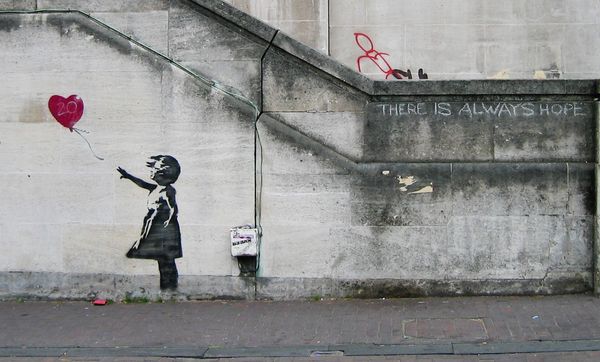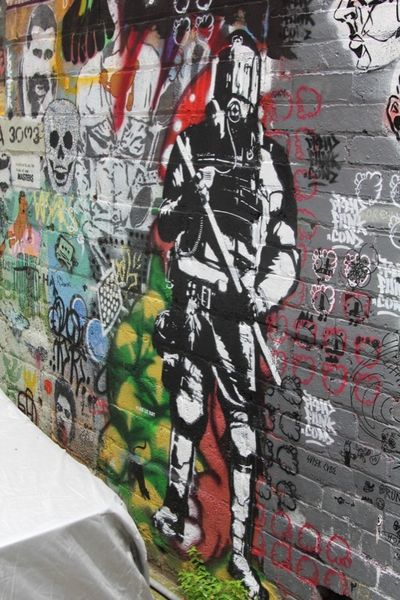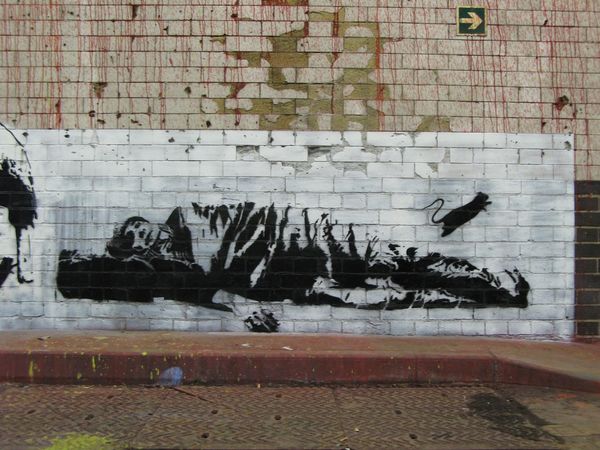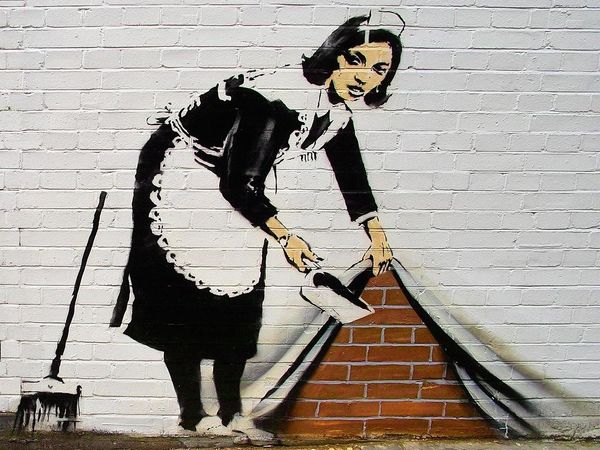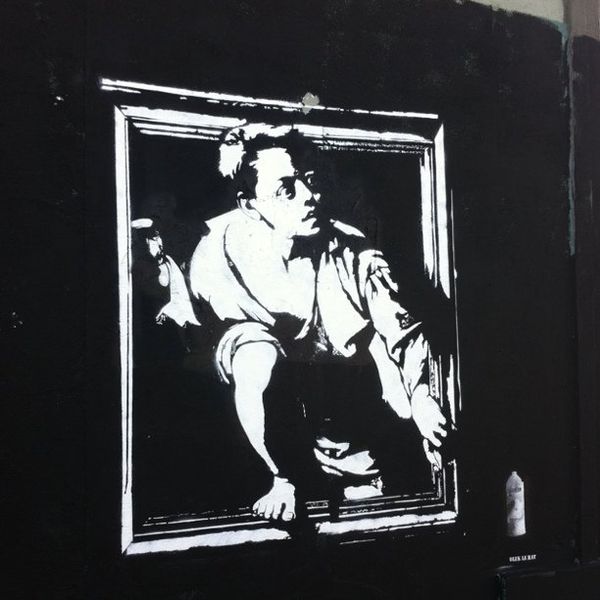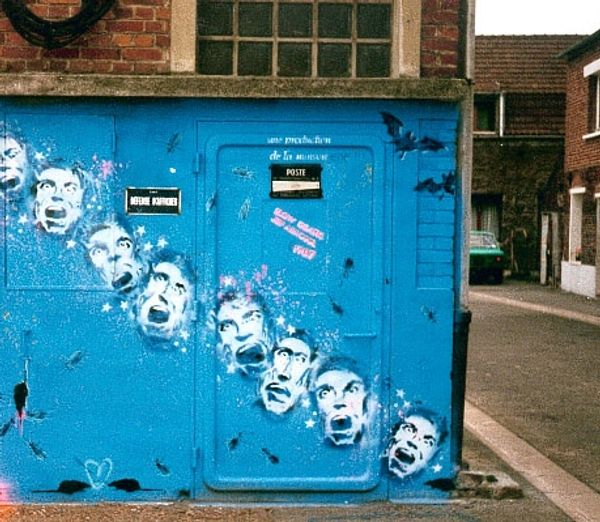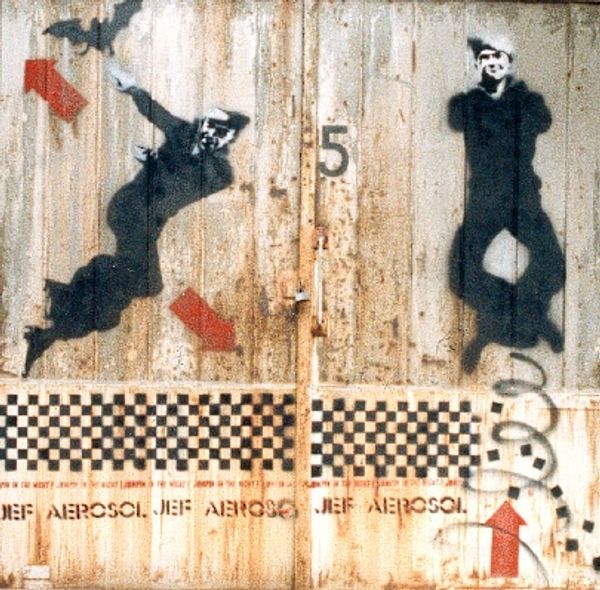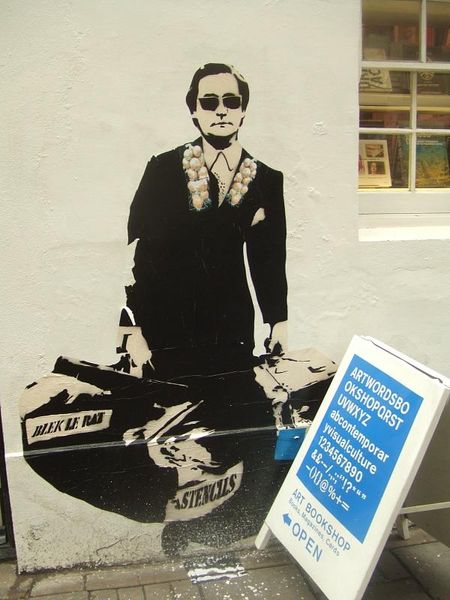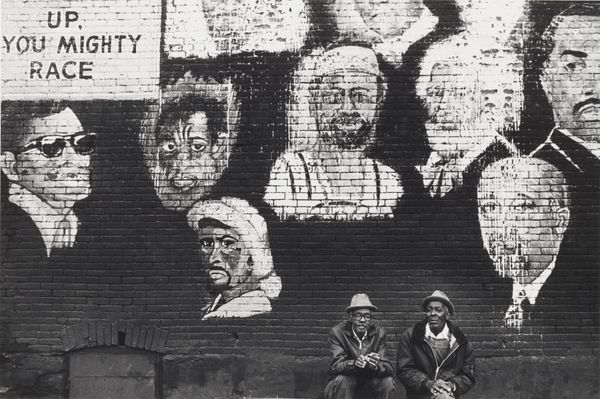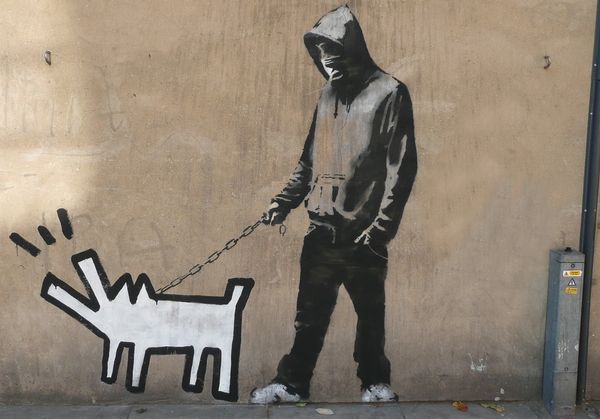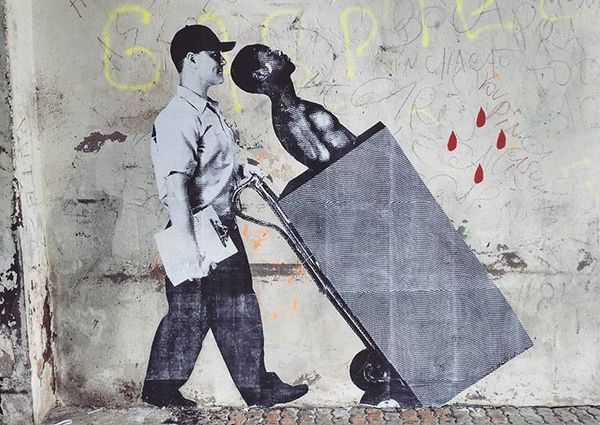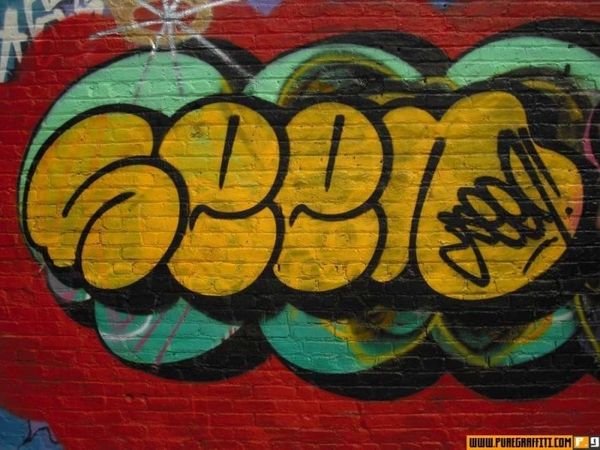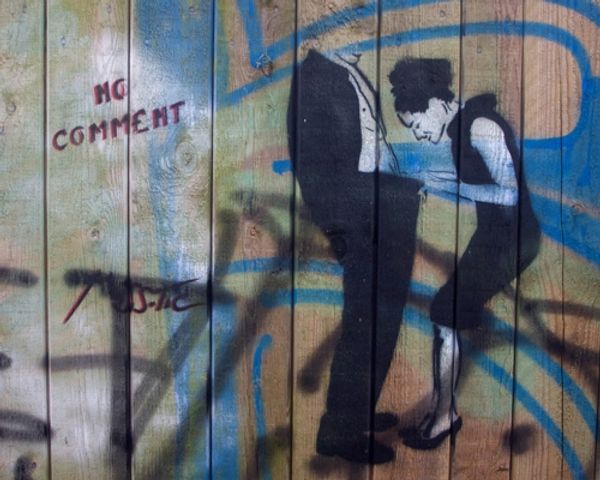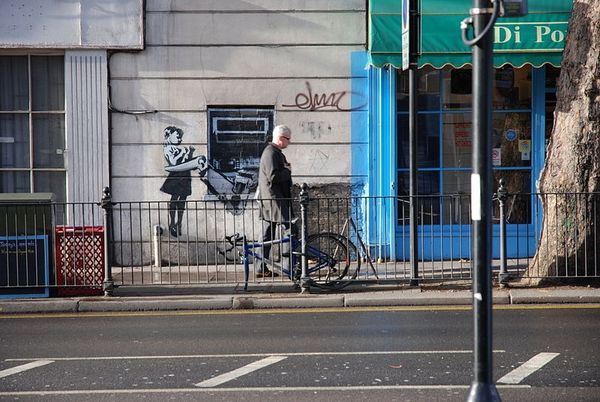
Copyright: Banksy,Fair Use
Curator: Let’s consider Banksy’s work, "Brick Lane, East End," circa 2004. Initially, one is struck by the texture, literally, given the brick as a support, and pictorially as the ground for overlaid media. Editor: It's gritty, isn't it? Almost melancholic, this black and white figure struggling to be seen amidst the chaos of the street. There's a visual tension between the permanence of the brick and the ephemerality of street art. Curator: Precisely. The choice of a brick wall itself speaks volumes about urban decay and renewal, issues so relevant in gentrifying East London, specifically around Brick Lane. But note how the artist has chosen this medium and context to express their beliefs, layering meaning within the very material itself. Editor: You're right. I'm thinking about the stencil technique. It allows for mass production, democratic accessibility... a means to quickly disseminate anti-establishment messages using the means of capitalistic production itself, so subversive! Curator: It plays with that tension, certainly. Appropriation is key here. Consider the act of marking and re-marking the existing brick landscape. The site becomes a battleground, where commercial and political discourses collide to transform this ordinary public space into an artistic one, forcing the public to consider its relationship with urban life. Editor: And the layering! The posters and paste-ups add another dimension, obscuring and revealing aspects of the image. What a process it becomes: accretion, and intervention. This artwork serves as a record of urban culture and also highlights our own habits of consumption, questioning who and what shapes urban identity. Curator: Ultimately, for me, this image encapsulates the complicated discourse on power, identity, and visibility embedded in the materiality of street art. The labor it represents speaks to a history of resistance. Editor: And for me, seeing it now, makes me ponder: where do we draw the line between art, labor, protest, and social change? What’s left behind as neighbourhoods continue to evolve?
Comments
No comments
Be the first to comment and join the conversation on the ultimate creative platform.
